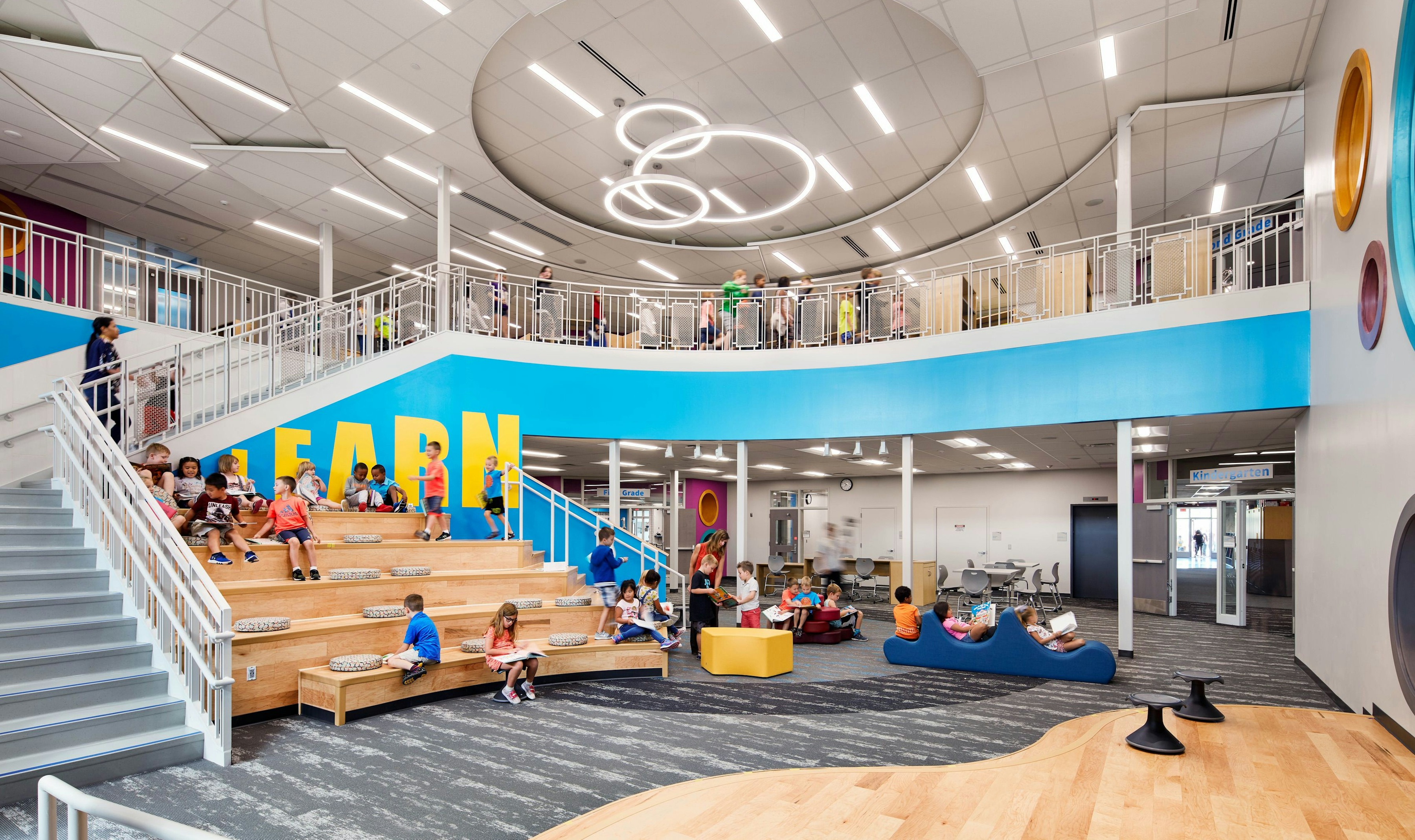Establishing Elementary School Design Characteristics
Allowing students to feel comfortable at school is a fundamental piece of criteria that leads to elementary school design. To accomplish this feeling, we design school navigation to be intuitive for young children. The classroom environment must also be sized accordingly. Incorporating furniture and accessories that fit elementary-aged children allows them to independently complete tasks without being overwhelmed by the nature of an enlarged environment. Spaces that are viewed as being enjoyable also positively encourage students to accomplish educational tasks. These schools are properly branded to be developmentally appropriate and include colorful environments to promote creativity and areas for activity to encourage movement.
Incorporating Exploratory Classes
Today, there is an emphasis being placed on encouraging elementary school students to explore their academic interests. Classes are not being strictly confined to the traditional core subjects of language arts, social studies, math and science. Instead, classes take on innovative curriculums and explore areas like science, technology, engineering and mathematics (STEM) concepts that include robotics and engineering. These courses promote collaboration amongst students as they embrace project-based learning. With this educational transition in mind, we design learning spaces to support the evolving curriculum. Makerspaces present students with room to conduct small group exercises, while learning studios allow for hands-on activities that promote group cooperation and participation.

